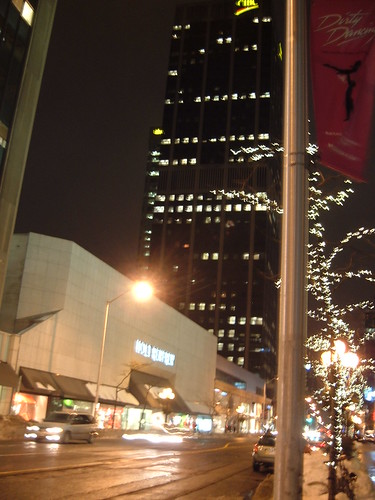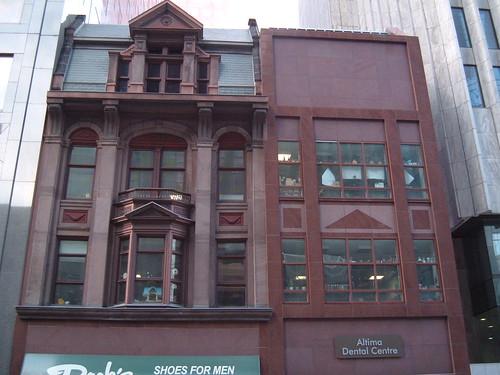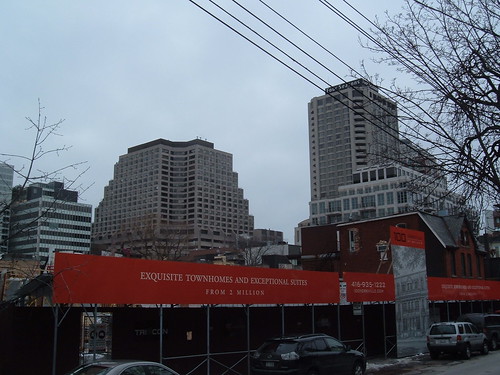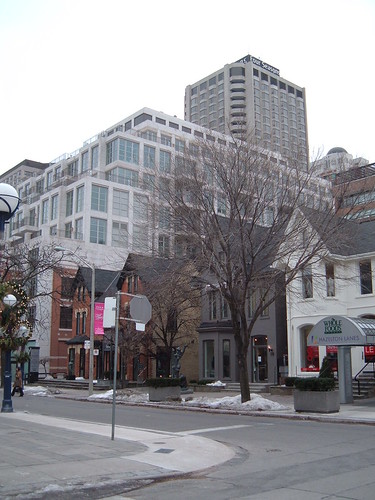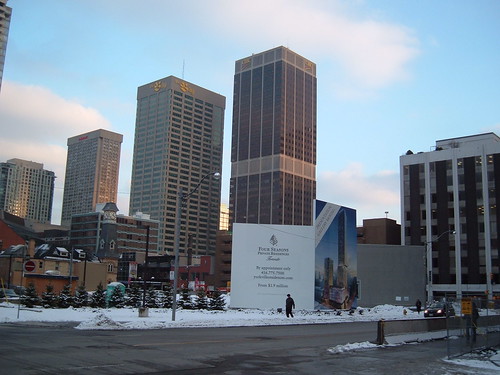There was discussion in Toronto this spring about a downtown relief line and it generated a lot of ideas. For the record, I completely support this line and hope it is built sooner rather than later.
Are there other subway possibilities in Toronto? What if a subway line was built along Spadina? A right-of-way streetcar line currently exists with two car lanes of traffic going both north and south and it could be built here.
I propose that a new subway line be built with stops beginning at Spadina and Bloor (the line would have exits that connect at Bloor with the current exit and then another exit towards Sussex) where it would connect with the Yonge-University-Spadina line Spadina Stop. The stops (heading south) would then be at College, Dundas, Queen, King, Front, and Bremner/Lakeshore.
An additional extension could be made to run east with stops at Rees St (the Skydome/CN Tower stop), York St (Air Canada Centre), Yonge St, and then north where it could connect again with the Y-U-S line at King station.
On Spadina, the interior lanes that previously held the streetcars would then be permanently converted to bike lanes.
Why should this go on Spadina when it is so close to the other subway lines? South of Bloor, Spadina is a very wide street and could support great density. Toronto needs to grow up, not out, and downtown already has the infrastructure to do so. Spadina is wide enough to accommodate additional density. Of course, special attention to zoning would be required to ensure that the heritage Victorian homes east of Spadina be spared razing, as well as ensuring that Chinatown remains in this area.
Having this subway line connect with the Y-U-S line would allow for additional commuter relief should either of the lines be stopped for an extended period of time.
This line would connect the rest of Toronto to the waterfront where there are countless very tall buildings being built. The project at Spadina and Lakeshore (Cityplace) is going to house thousands of people and as people move into this newly created neighborhood, they will need to be served by frequent service. With all of the additional condos and office buildings in this area, a viable alternative to cars must be produced. This area will only grow more dense.
The connection to the stadiums and the CN tower will be useful for tourism.
One area of difficulty with this project would be the engineering of the line once it reaches Lakeshore Boulevard. I do not know if the land here is stable enough to support the subway. In this area the subway could either use two of the current traffic lanes under the Gardiner expressway or move from underground to become elevated between the traffic of the Gardiner above and the traffic on Lakeshore Boulevard below.
From what I have learned in my short time in Ontario, any transit project requires extensive cooperation between Federal, Provincial, and Municipal governments. The city of Toronto currently is busy promoting its numerous LRT lines, which are important and must be pursued. Metrolinx is currently putting together several proposals for the future of transit in Toronto and southern Ontario. As far as I know, neither group is supporting a Spadina subway line as I am suggesting.
Could this ever happen? Probably not, as the city is putting its money into developing other LRT lines and has many more priorities. However, there are not very many places where the city could build subways and later on in the 21st century, additional relief for traveling within downtown may be needed.
